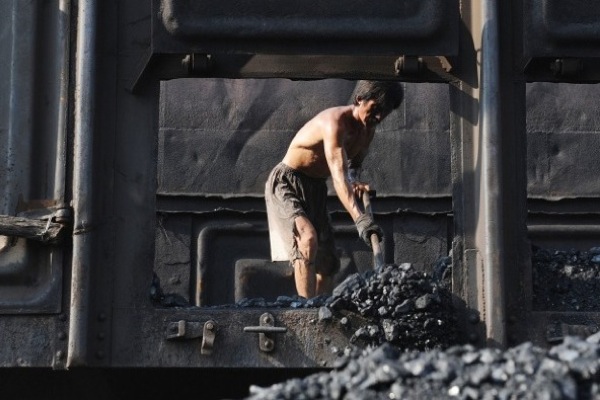
* China coal use rises for 2nd year in absolute terms
* Coal’s share of total energy below 60 pct for 1st time
* Biggest rise in CO2 emissions since 2013 -Greenpeace
* Carbon intensity cut beats target -environment ministry
China’s coal consumption rose for a second year in a row in 2018, but coal’s share of total energy consumption fell below 60 percent for the first time as cleaner energy sources gained ground, official data showed on Thursday.
The world’s biggest coal consumer used 1 percent more coal in absolute terms last year than in 2017, China’s National Bureau of Statistics said in an annual communique. Coal consumption had risen for the first time in four years in 2017.
The good news is that renewable energy continued to grow rapidly in 2018, and new aggressive air pollution policies were introduced
However, coal accounted for only 59 percent of China’s overall energy consumption last year, down 1.4 percentage points from 2017, while gas, nuclear power and renewable energy combined accounted for 22.1 percent, up 1.3 percentage points.
That brings the world’s biggest emitter of greenhouse gases closer to its target of reducing the proportion of coal in its energy mix to below 58 percent by 2020.
The result came as China’s total energy consumption rose by 3.3 percent year-on-year in 2018, the data showed. Electricity usage rose 8.5 percent last year, according to the National Energy Administration.
“The good news is that renewable energy continued to grow rapidly in 2018, and new aggressive air pollution policies were introduced,” Lauri Myllyvirta, an analyst at environmental group Greenpeace, said in a note.
However, a rapid rise in energy consumption, including increased residential electricity usage, still resulted in the biggest gain in CO2 emissions since at least 2013, Myllyvirta said.
“The increase in coal consumption since late 2016 has resulted from growth in electricity demand and expansion of the highly-polluting coal-to-chemical industry,” he said.
Beijing’s efforts to stimulate the economy were contributing to increased energy consumption, said Peter Kiernan, lead energy analyst at the Economist Intelligence Unit in Singapore.
“The problem is that the government tries to stimulate the economy because it fears slowdowns,” he said. “But this just leads to higher energy consumption from resource-intensive industries such as construction.”
Coal’s share in China’s energy mix has fallen from 64 percent in 2015, Kiernan noted, but this rate of reduction is currently “too slow compared to the pace required, both domestically and globally, if emissions are to start falling sharply.”
Carbon intensity, measured in carbon dioxide emissions per 10,000 yuan ($1,497) worth of GDP, fell 4 percent last year as China strives to cap its emissions by around 2030.
Liu Youbin, a spokesman for China’s Ministry of Ecology and Environment, said at a press conference on Thursday that China had bettered its carbon intensity reduction target for 2018 by 0.1 percentage points.
“Reducing carbon emissions is not only what the world wants China to do but also an inherent requirement for China’s sustainable development … China will not ditch our promise (to lower carbon emissions) for any reason,” he added.
($1 = 6.6788 Chinese yuan renminbi)
(By Tom Daly, Muyu Xu and Henning Gloystein; Editing by Richard Pullin)